DeFuniak Springs police roll out new tool to restrain people without injury. Here's how it works.
DeFUNIAK SPRINGS — Instead of “Taser! Taser!” police officers may soon be yelling “Bola! Bola!” in situations that call for quick, but non-lethal restraint.
The term is short for BolaWrap, a new restraint device purchased by the DeFuniak Springs Police Department in November. The hand-held tool deploys an 8-foot Kevlar tether to temporarily restrain subjects from a distance of 10 to 25 feet.
The device is about the same size as a stun gun, but poses much less risk to the detainee.
2021 fundraiser: DeFuniak Springs first responders raise over $11K in first 'Battle of the Badges'
Case solved: Yearlong investigation leads to charges in 2021 shooting that paralyzed DeFuniak Springs woman
Lt. Phillip Austin, who oversees the department's training division, said officers hope to use the tool in lieu of stun guns to safely apprehend and take a person into custody or restrain them during a mental health crisis.
“Over the years, officers have kind of come to rely on Tasers as their less-lethal choice, but there are some inherent risks that come with Tasers,” Austin said.
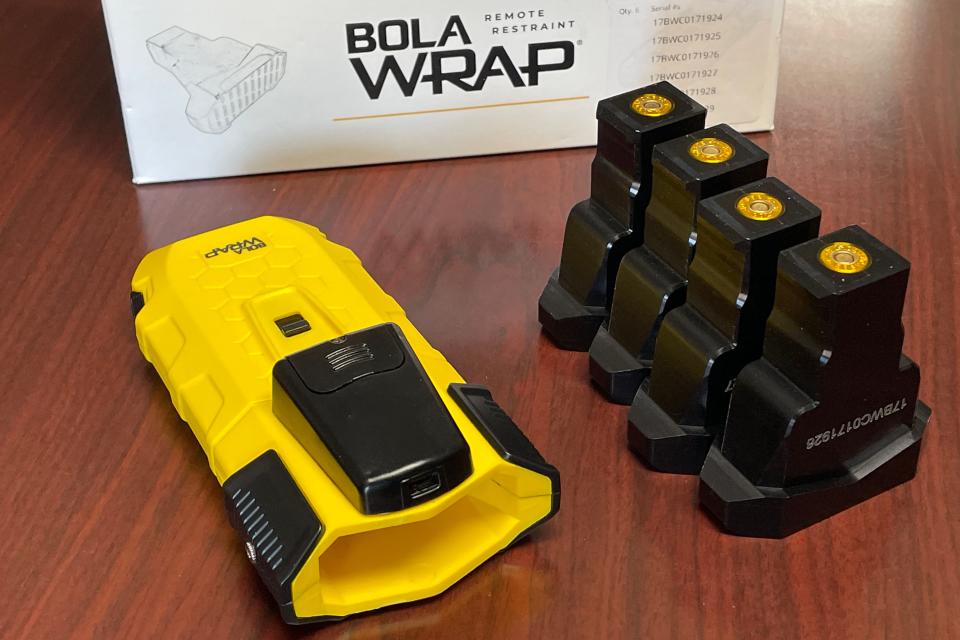
A stun gun delivers multiple short, low-energy electrical pulses to the body that cause short, sustained muscle contractions. Certain medical conditions, pregnancy, or the use of illegal drugs can heighten risk of serious injury when being tased, Austin said.
The BolaWrap is solely a physical restraint. The Kevlar cord contains a small set of weighted hooks at each end. When the cord hits the subject, the hooks embedded in their clothing. The hooks can cause minor scrapes if a person is moving or struggling, but pose no other harm.
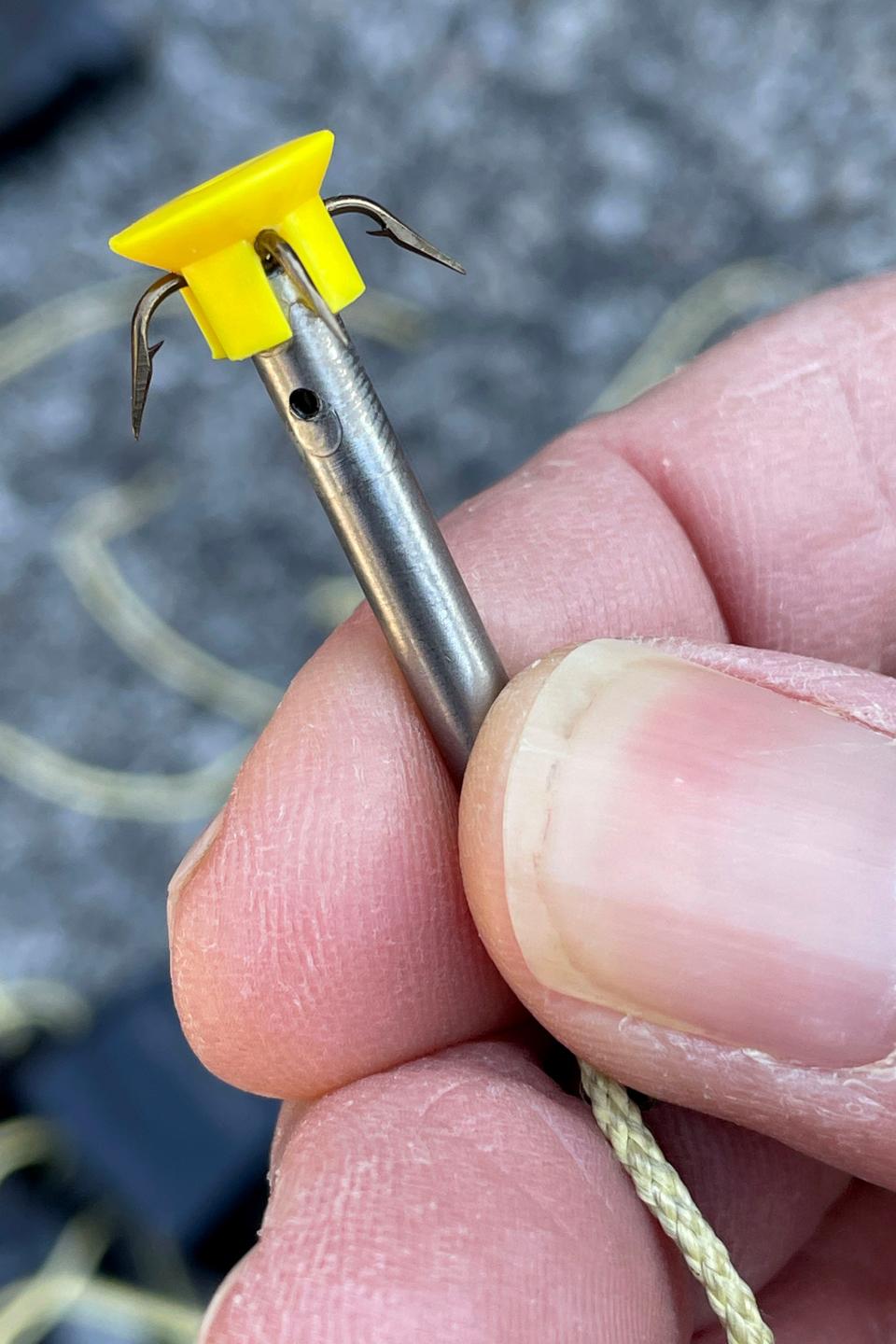
“They’re a really good device. From the uses that I’ve seen, people that are being taken into custody, there’s little to no injury,” Austin said. “It’s a lot safer.”
The DeFuniak Springs Police Department is one of the first law enforcement agencies in the Florida Panhandle to begin using the BolaWrap. Austin said the addition of the tool is a part of an effort to expand training when responding to mental health crises.
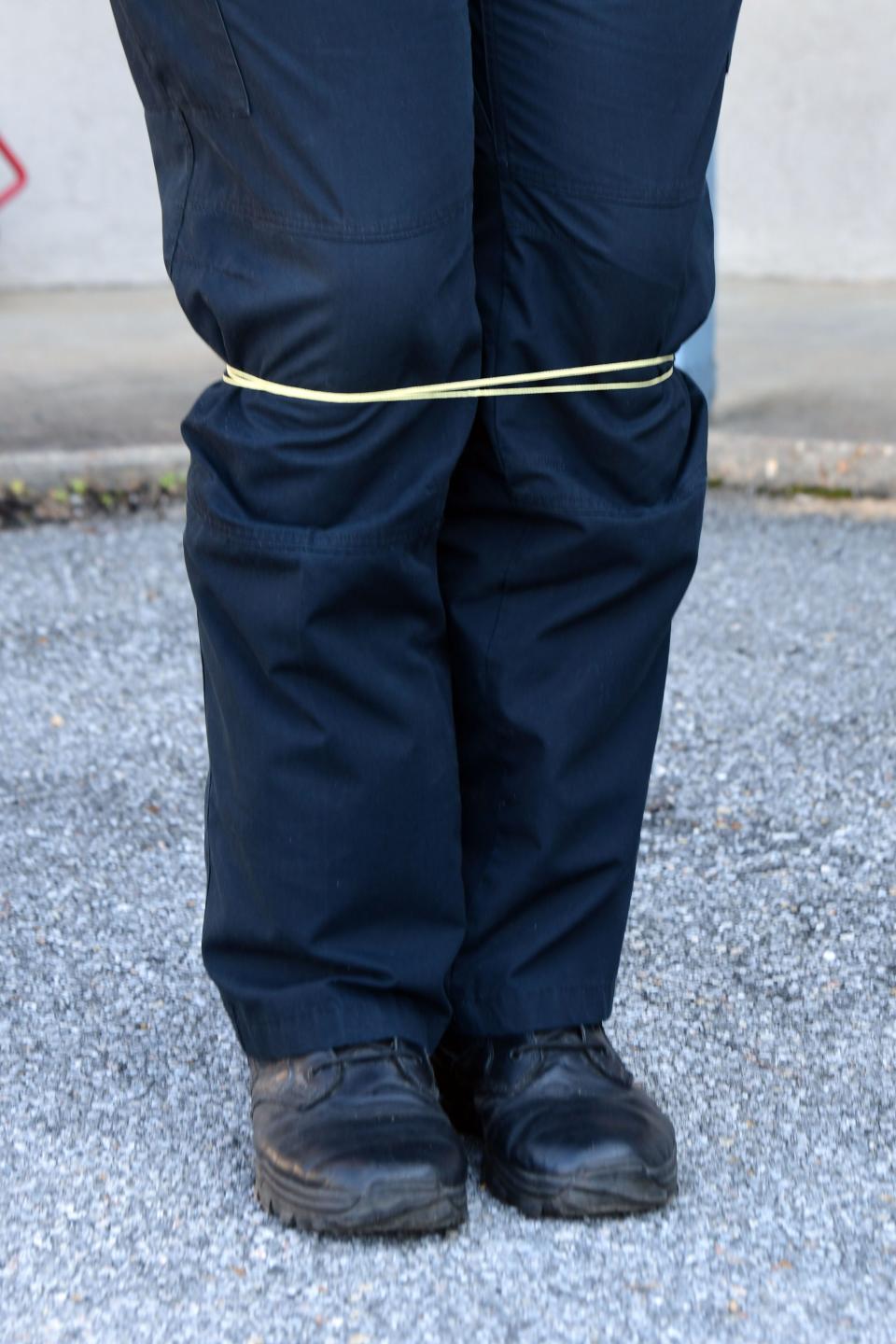
More on mental health: Mental health issues are rising. The number of mental health care providers is falling
The police department was able to purchase four of the devices through a grant after learning of their use at other law enforcement agencies across the country.
“That’s the direction that we’re going,” Austin said. “We do have several of our officers who have gone to CIT (Crisis Intervention Team) training. I think mental health is now more recognized than it used to be in the past, so we’re trying to change the way we operate so we can deal with it more effectively.”
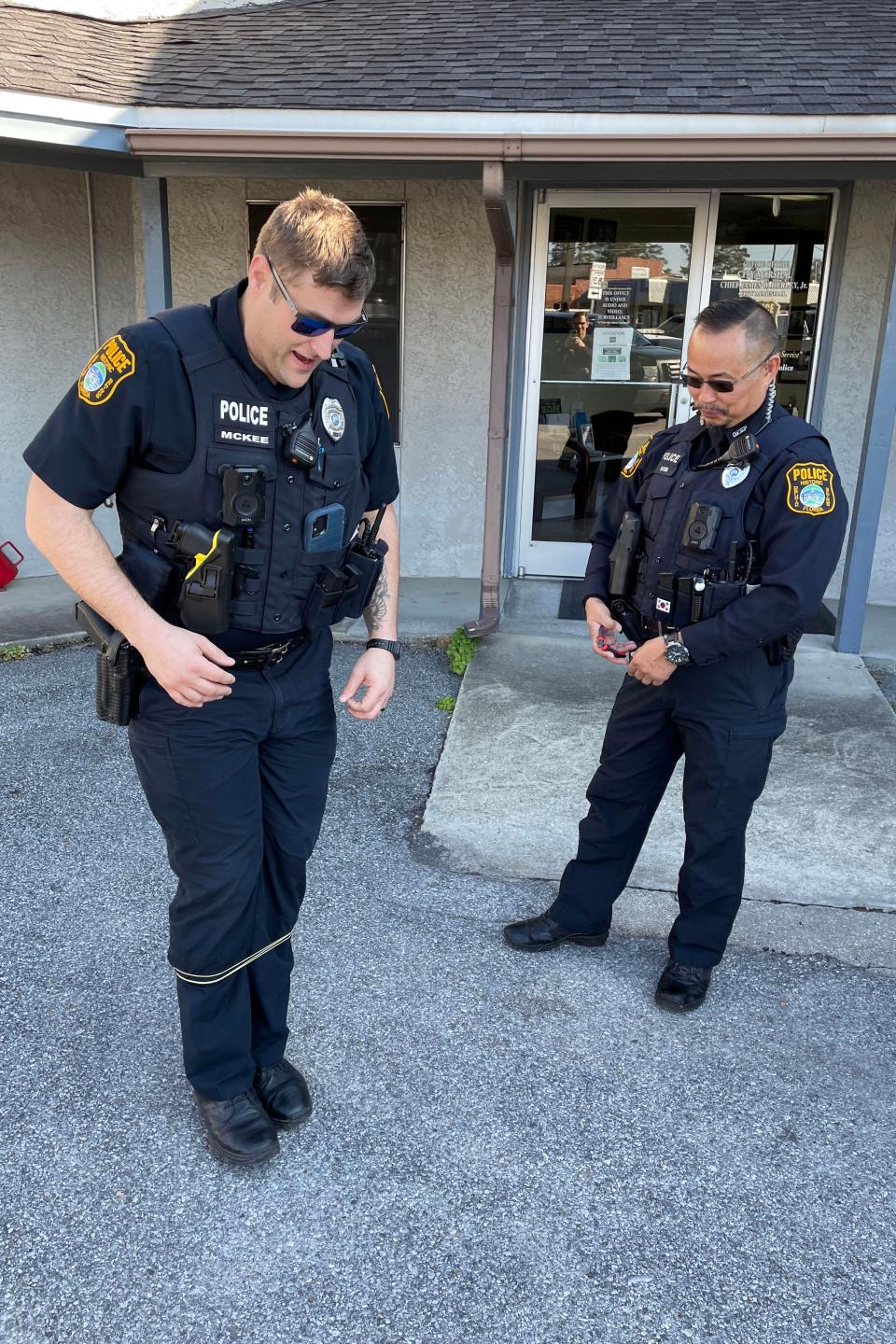
DeFuniak Springs police officers had not used the BolaWrap on any calls as of Thursday, but the device will likely come in handy when they need to initiate an involuntary mental health examination under the Baker Act, which Austin said is common.
Another common scenario in which officers might use the device would be on a person having a mental health crisis in the middle of a road.
“Someone that is physically resistant in those types of situations where we don’t really want to have to deploy a Taser on them. We could use this device instead,” Austin said. “They don’t know what they’re doing wrong and they need help, and we’d really like to not have to use a Taser on them.”
Mental health alert system: New system alerts Bridgeway Center when mental health patients show up at the ER
All 14 patrol officers are undergoing two hours of training to learn how to properly use the device. A key part is aiming. It needs to be deployed either between the mid-thighs to ankles or between the wrists and elbows. A green laser indicates where it will be directed.
“They have to actually fire two live cartridges,” Austin said. “And they have to go through drills to make sure they know how to load and unload and how to use the activation button, use the laser, where to aim properly.”
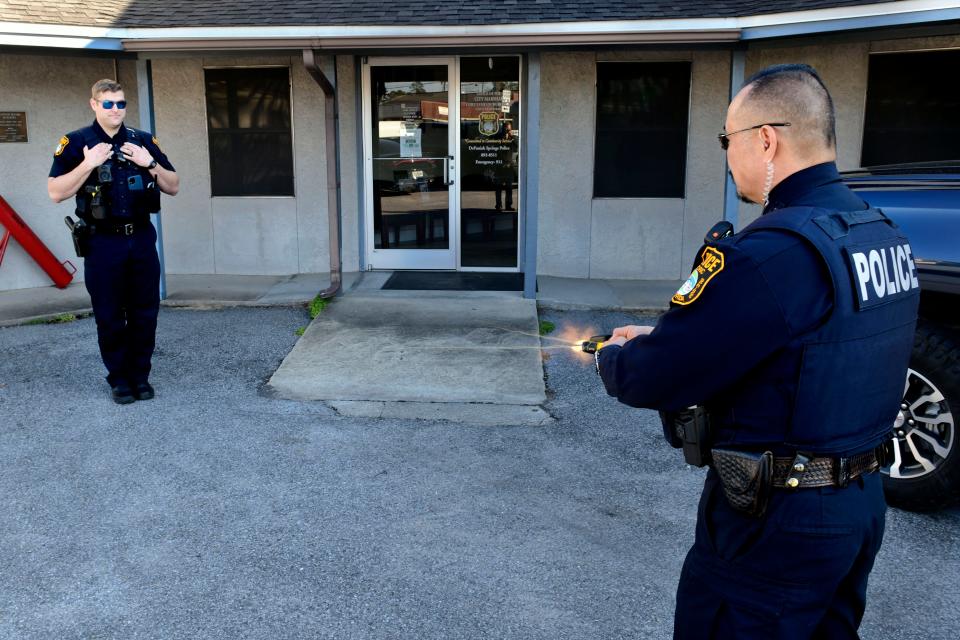
A silhouette target allows officers to practice aiming the laser, and other officers serve as real-life targets. Field Training Officer Wan Boros demonstrated the restraint system on Officer Josh McKee on Thursday.
It was around the eighth time McKee experienced what it’s like to be immobilized by the restraint. He also has been tased and sprayed with mace as a part of regular training, but said the BolaWrap is by far the least harmful of the three tools.
Several other officers, including Boros, expressed excitement for the new tool and its capabilities of de-escalating disturbances with less harm. Currently, each supervisor has been issued a device.
Once training is complete, the restraint systems will be available to all officers during each of four rotating patrol shifts should they encounter a situation when it is needed.
“This tool is just what law enforcement needed to restrain persons in mental crisis,” Police Chief James Hurley said. “We don’t want to cause injury if we can help it.”
This article originally appeared on Northwest Florida Daily News: DeFuniak Springs police use new tool BolaWrap to restrain people

